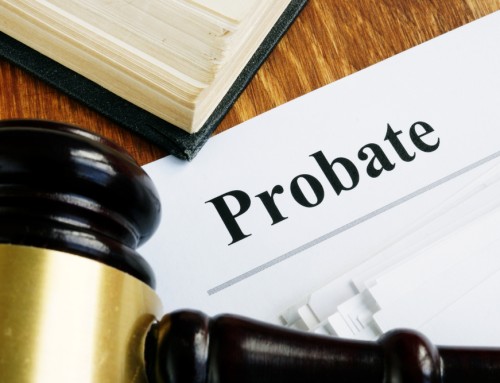A revocable living trust is a powerful tool in estate planning that provides individuals with greater control over their assets during their lifetime and after their death. It helps ensure that your assets are managed according to your wishes and distributed to your beneficiaries without the delays and expenses of probate. Whether you're planning for your future or protecting assets for your loved ones, understanding the components and benefits of a revocable living trust is crucial. This article will explain what a revocable living trust is, its components, and why it might be the right choice for your estate planning needs.
What is a Revocable Living Trust?
A revocable living trust is a legal agreement created by an individual (known as the “trustmaker”) to hold and manage assets for the benefit of their beneficiaries. The trust is revocable, meaning the trustmaker can change, alter, or cancel it at any time while they are still alive, as long as they are mentally competent. This flexibility allows the trustmaker to adjust their estate planning strategy as their circumstances change.
In a revocable living trust, the trustmaker transfers assets, such as real estate, bank accounts, and other property, into the trust. These assets are then managed by a trustee, who may be the trustmaker or someone else designated by the trustmaker. After the trustmaker's death, the trustee manages the distribution of assets according to the terms of the trust, without the need for court involvement.
Key Components of a Revocable Living Trust
Several essential elements make up a revocable living trust, including the following:
- Trustmaker (Grantor): The person who creates the trust and transfers their assets into it.
- Trustee: The individual or institution responsible for managing the trust's assets. Often, the trustmaker serves as the trustee while alive, but a successor trustee is named to take over upon the trustmaker's incapacity or death.
- Beneficiaries: Individuals or entities who will receive the assets held in the trust according to the terms specified by the trustmaker.
- Assets: Property or funds that are transferred into the trust, such as homes, financial accounts, and investments.
The flexibility of the revocable living trust allows the trustmaker to change these key components at any time. For instance, the trustmaker can modify who the trustee is or alter the beneficiaries of the trust as their life evolves.
The Role of a Trustee
The trustee is one of the most critical components of a revocable living trust. Their responsibilities are vast and include:
- Managing Trust Assets: The trustee is responsible for the day-to-day management of the assets held in the trust, which can include paying bills, managing investments, and ensuring that the trust’s objectives are met.
- Distributing Assets: After the trustmaker’s death, the trustee is responsible for ensuring that the assets are distributed according to the terms of the trust. This can include distributing property, financial accounts, or other assets to the beneficiaries.
- Avoiding Conflicts: A good trustee must manage the assets impartially and in the best interests of the beneficiaries. This helps minimize potential conflicts between family members or other parties.
Choosing the right trustee is crucial. Many people choose a trusted family member, a close friend, or a professional trustee, such as an attorney or a financial institution, to take on this role. The trustee must have the skills and integrity necessary to manage the trust's assets and administer it according to the trustmaker's wishes.
The Benefits of a Revocable Living Trust
- Avoids Probate: One of the most significant advantages of a revocable living trust is that it helps avoid probate. Probate is the legal process through which a deceased person’s will is validated, and their assets are distributed. This process can take months or even years, costing both time and money. A revocable living trust bypasses this process, ensuring that your assets are distributed directly to your beneficiaries without court involvement.
- Increased Privacy: Unlike a will, which becomes part of the public record when it goes through probate, a revocable living trust remains private. This means that the distribution of assets and other details of your estate plan will not be publicly available, protecting your family's privacy.
- Continued Asset Management in Case of Incapacity: If the trustmaker becomes incapacitated, the successor trustee can step in and manage the assets without the need for a court-appointed guardian or conservator. This provides a seamless transition and ensures that your financial affairs are handled according to your wishes even if you are unable to manage them yourself.
- Flexibility: Because a revocable living trust is revocable, you can make changes at any time during your lifetime. If you acquire new assets, change beneficiaries, or want to adjust how your assets are managed, you can update the trust accordingly. This makes a living trust a flexible and dynamic tool for estate planning.
- Tax Benefits: While a revocable living trust does not provide immediate tax benefits (since the trustmaker can revoke or change it), it does allow for more efficient planning of the transfer of wealth. The trust can be designed to minimize estate taxes in some cases, particularly when combined with other estate planning tools.
Revocable Living Trust vs. Will: Which One Should You Choose?
While both a revocable living trust and a will serve as critical components of estate planning, they differ in several key areas.
- Probate: A will must go through probate, which can be a lengthy and costly process. A revocable living trust, on the other hand, allows for the direct transfer of assets to beneficiaries, bypassing probate altogether.
- Control: A revocable living trust provides more control over asset distribution during the trustmaker’s lifetime and after their death. A will only takes effect after death, and it must go through probate before assets are distributed.
- Flexibility: A revocable living trust offers greater flexibility, as the trustmaker can make changes to the trust at any time. A will can be changed, but it often requires additional legal formalities.
- Privacy: A will becomes part of the public record during probate, while a revocable living trust remains private.
When Should You Consider a Revocable Living Trust?
A revocable living trust may be the right option if:
- You want to avoid probate and ensure a faster, less costly distribution of your estate.
- You have assets in multiple states, and you want to avoid the complexity of probate in different jurisdictions.
- You want to maintain privacy about the details of your estate and beneficiaries.
- You are concerned about the possibility of becoming incapacitated and want to ensure that someone can manage your financial affairs without the need for court intervention.
Why a Revocable Living Trust is Worth Considering
A revocable living trust offers a unique combination of benefits for individuals looking to ensure that their assets are distributed according to their wishes with minimal hassle. It helps avoid the lengthy probate process, provides greater control over assets, and offers the ability to adjust your estate plan over time. Additionally, it helps provide privacy and can protect your loved ones in the event of your incapacity.
Consulting with an estate planning attorney can help you determine if a revocable living trust is right for you and your family. Understanding the benefits and the flexibility a trust provides can make a significant difference in your estate planning strategy.






